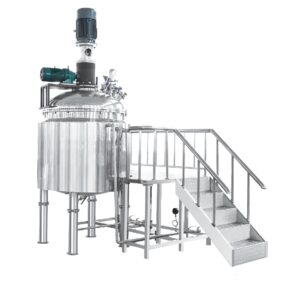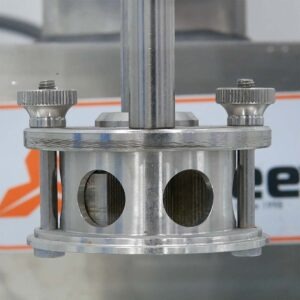Maximizing cost-efficiency in the production of high-volume personal care items through tailored process enhancements—many contemporary personal care products are currently retailed as private labels in supermarkets and discount stores. The demand for competitive pricing from consumers also encompasses the expectation of superior product quality. Consequently, producers of such items, often contract manufacturers, seek to streamline costs while maintaining high product standards.
The production of private label personal care items frequently involves recipe adjustments. These changes may be necessary due to seasonal variations in manufacturing, special product promotions, or marketing strategies. Consequently, this approach often necessitates rapid process modifications to ensure optimal production in terms of both quality and cost. But how can this be achieved?
Process Development
Effectively implementing processes developed at the laboratory scale into production at large scales requires, particularly in expansive operations, a thorough understanding of the product to be manufactured. Fundamental operational procedures such as heating and cooling, coupled with the optimal utilization of appropriate equipment technology, lay the groundwork for a successful production process. This necessitates efficient collaboration between product developers on the client side and application engineers on the supplier side.
Example: Sunscreen Lotion
A cosmetics manufacturer in Southern Europe sought to expand its production capacity to manufacture sunscreen lotions for a supermarket chain. The target production scale was 10,000 liters, utilizing available space within the production facility. A key process parameter was the elimination of preparation phase vessels due to operational constraints and spatial limitations. Thus, the challenge extended beyond updating an existing process with modern equipment—it involved transitioning from a “beaker glass process,” where premixes were manually prepared in the laboratory, to a “single pot process” suitable for large-scale production.
Initial trials were conducted on a three-liter scale to delineate individual process steps. Based on data from these smaller-scale trials, further experimentation was carried out using a 100-liter pilot-scale unit. The defined parameters derived from these trials formed the basis for successful scale-up. Parameters included dosing and entrainment times for components, mixing durations, homogenization periods, vacuum levels, and power input requirements for the agitator and homogenizer.
Process Solution
The success of this bespoke manufacturing process hinges on the efficient interaction of core components—the agitator and homogenizer. The homogenizer facilitates efficient product turnover across a spectrum of viscosities, enabling rapid homogenization within short mixing durations. Particularly in large-scale units, efficient mixing contributes to significant time savings by enhancing heat transfer. Moreover, the homogenizer’s robust axial circulation aids in degassing products at the conclusion of the production process.
The Yekeey homogenizer excels in incorporating thickeners at high dosages without generating undesired agglomerates, both with powdered and pre-mixed liquid thickeners. Compared to other homogenizers, it exhibits high circulation rates even with high viscosities, ensuring swift homogenization of vessel contents. In emulsions, the Yekeey homogenizer produces narrow particle size distributions, enhancing emulsion stability.
In addition to the agitator and homogenizer, other components are leveraged to optimize performance. Automatic weighing of large-volume liquids and solids enables precise and swift dosing. Thickeners and agents are introduced directly into the homogenizer, promoting rapid interaction within the agitator for homogeneous substance distribution.
In collaboration with the customer, Yekeey designed a process that delivers the requisite quality within a reduced timeframe.









